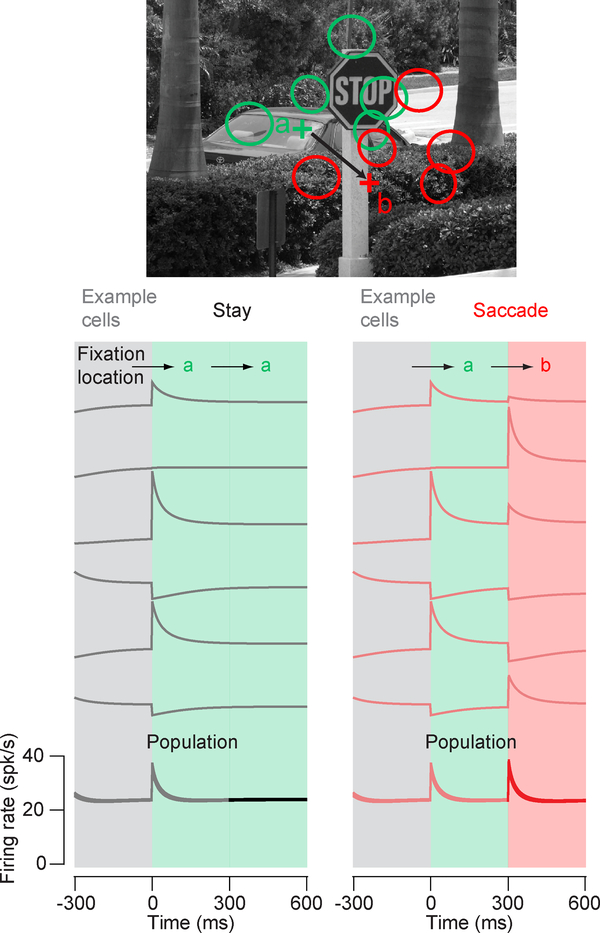Figure 2.
Saccades increase the average response of cells with adaptive changes in gain. Responses were simulated for n = 500 neurons with randomly placed RFs (green circles) where the eyes either remained at the starting fixation location (a, green cross) or moved to a new fixation location (b, red cross). Remaining at the same location does not change the adapted responses (left, black) while moving the RFs to a new location (red circles) does change adapted responses (right, red). Although the new inputs to the RFs can lead to smaller or larger responses for a random selection of example cells (right versus left column “Example Cells”), overall, there is a net increase in response as a result of the new input (right versus left column “Population”).

